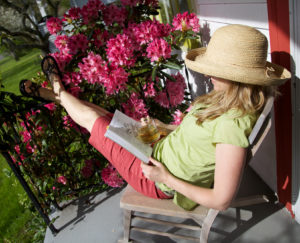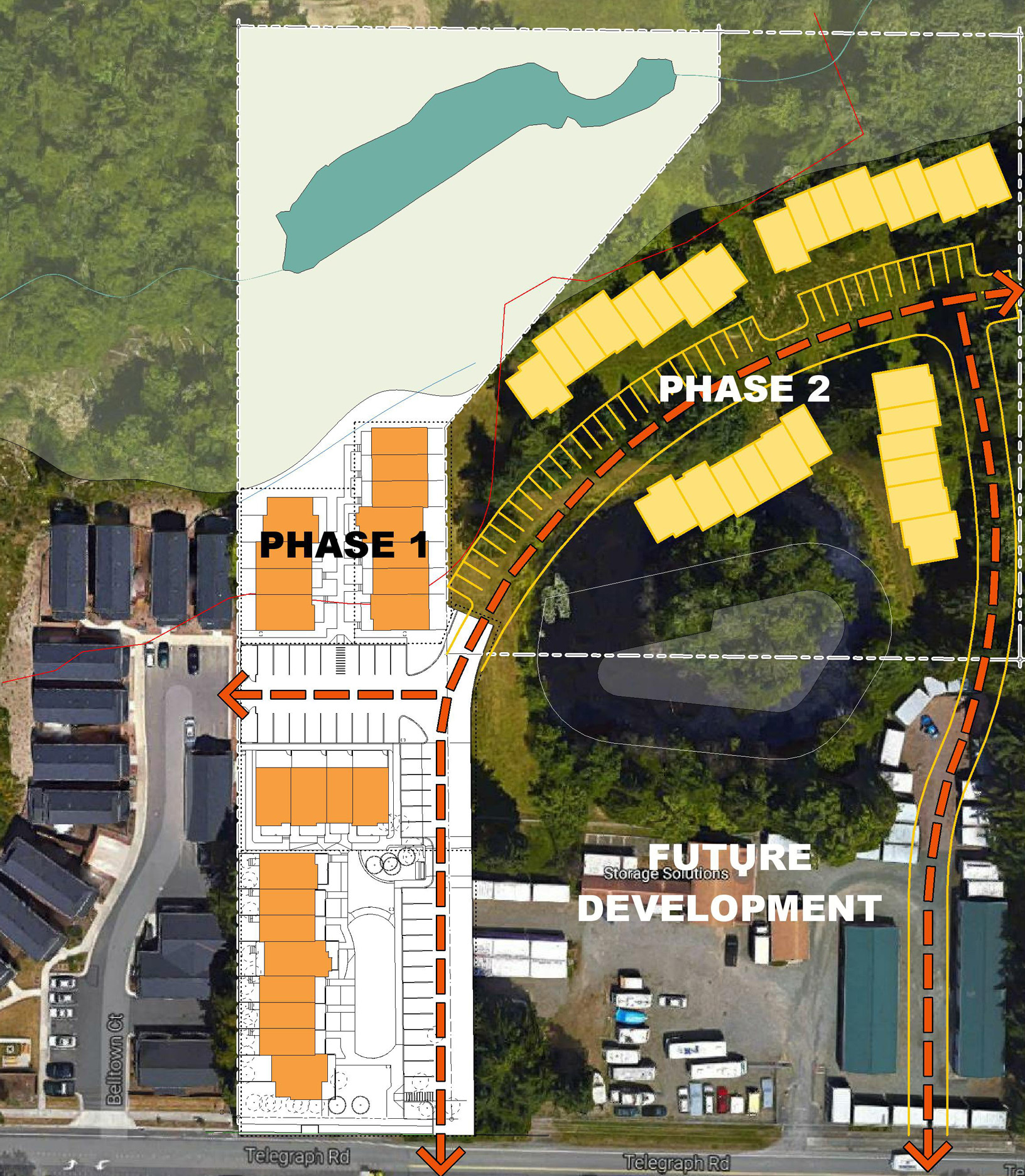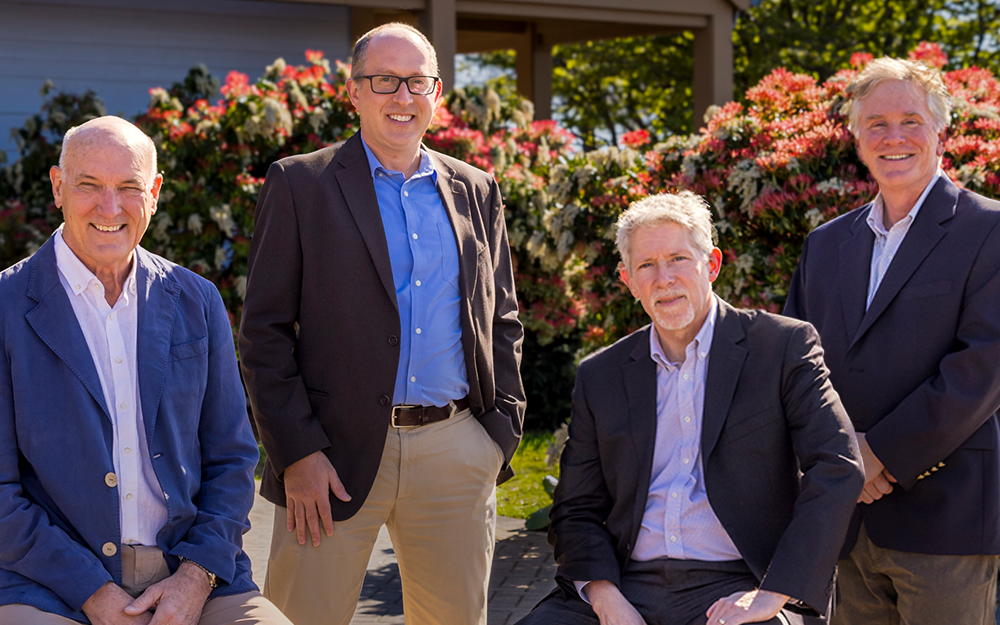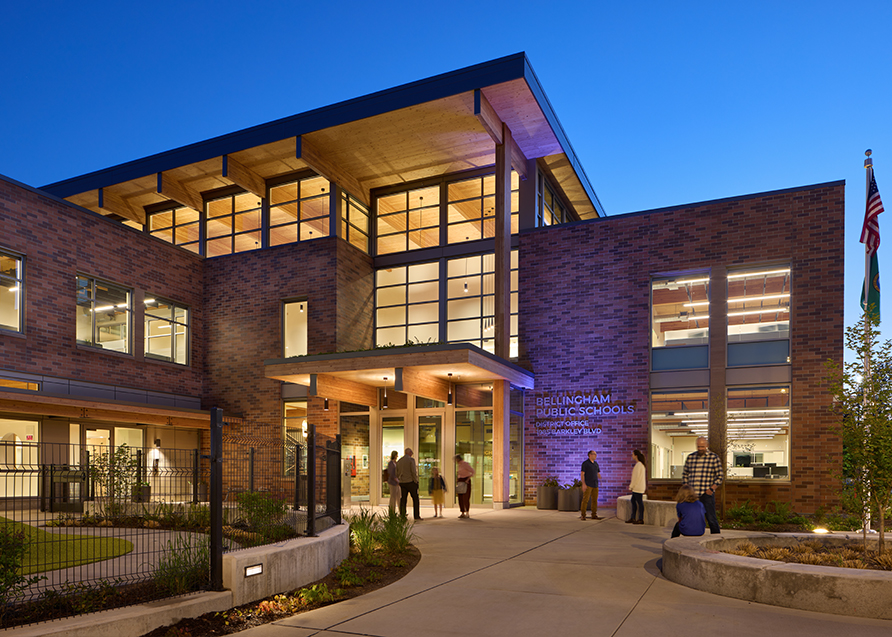The answer lies in the question itself: they’re neighborhoods, which by definition holds both spatial and social qualities.
While physical boundaries define it on a map, we would argue that a neighborhood’s degree of social capital — its networks of relationships that foster “neighboring behavior”— is what makes it relatively stronger or weaker. (While this argument makes intuitive sense, it is also backed by research.[1])
With high social capital comes the sense of belonging and identity that in turn improves overall safety, health and wellbeing for residents. In short, strong neighborhoods help people and communities thrive.
Strong by Design
Bellingham’s older neighborhoods hold undeniable appeal: the trees are big, the alleys are secret and the memories – past and future – float sweetly through the air like the scent of lilacs on a soft spring morning. But make no mistake: it is not their age that makes them strong. It’s their design.
These neighborhoods all share certain spatial  characteristics: Short blocks. Small lots. Nice parks. Sidewalks and alleys. Modest or large, modern or traditional, the homes have public front porches, private back yards. Basic stuff, but together these characteristics help bind people together: they meet each other in the park or admiring the view, on a walk or taking out the recycling, over the backyard fence or picking up the mail. Neighbors hold events, meet at school functions, discuss neighborhood issues, share garden bounty, socialize; they become invested in each other and their shared place. Security, stability, a sense of belonging ensue.
characteristics: Short blocks. Small lots. Nice parks. Sidewalks and alleys. Modest or large, modern or traditional, the homes have public front porches, private back yards. Basic stuff, but together these characteristics help bind people together: they meet each other in the park or admiring the view, on a walk or taking out the recycling, over the backyard fence or picking up the mail. Neighbors hold events, meet at school functions, discuss neighborhood issues, share garden bounty, socialize; they become invested in each other and their shared place. Security, stability, a sense of belonging ensue.
This is not about the blocks or lot sizes per se. It’s about providing connections to each other, to neighborhood assets, and the broader community. It means providing places for kids to play, people to walk, plants and trees to grow. Human scale, visual interest and individual expression and nearby nature all matter.
As cities have ceded neighborhood planning to misguided market formulas inadvertently perpetuated by the real estate industry (and perhaps reinforced by a “lock your doors” media mentality). Newer neighborhoods may or may not include the social, functional, environmental and aesthetic considerations that broader planning principles take into account.
Instead, introverted lots, big garages that cut houses off from the street, security systems, lack of community connections and even lack of sidewalks at times create gated communities in effect if not in fact. This in turn creates the kind of exclusionary isolation that tends to divide people rather than bring them together.
With every new residential project comes an opportunity to create a vibrant neighborhood — as a firm and as a community we’d be crazy to pass that up.
Measure What Matters
All the more reason RMC keeps them at the forefront. With every new residential project comes an opportunity to create a vibrant neighborhood — as a firm and as a community, we’d be crazy to pass that up. So while Telegraph Townhomes, the Eleanor Apartments or Cornerstone may not have intimate alleys or back fences, they are all carefully designed to help people, neighborhoods and communities thrive.
But we want to go further. By formalizing a process for exposing social capital opportunities embedded in projects we design, we hope to enrich the conversation about housing in our communities, and help point to a future of neighborhood pride for all.
_______________
[1] Shuck, Amie and Dennis Rosenbaum 2006 “Promoting Safe and Healthy Neighborhoods: What Research Tells Us about Intervention” The Aspen Institute



